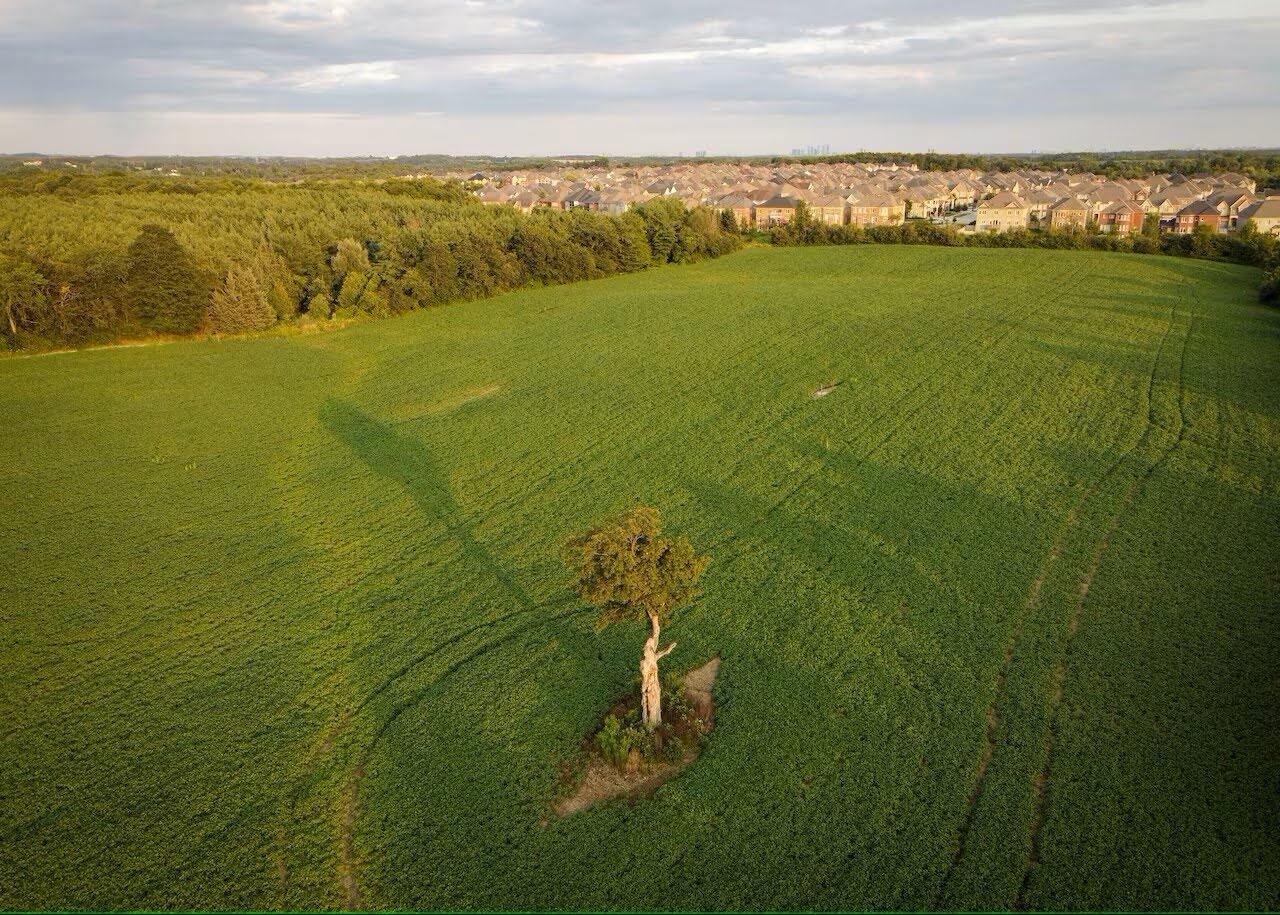Home>Garden Essentials>How Does Green Space Help Mental Health


Garden Essentials
How Does Green Space Help Mental Health
Modified: March 15, 2024
Discover the therapeutic benefits of gardening and how green spaces positively impact mental health. Explore the connection between gardens and well-being today.
(Many of the links in this article redirect to a specific reviewed product. Your purchase of these products through affiliate links helps to generate commission for Storables.com, at no extra cost. Learn more)
Introduction
Green spaces, such as parks, gardens, and forests, have long been valued for their ability to provide a tranquil escape from the hustle and bustle of everyday life. But did you know that these natural environments also have a profound impact on our mental well-being?
With the increasing prevalence of stress, anxiety, and other mental health disorders, finding effective ways to promote mental well-being has become a priority for many individuals. Understanding the connection between green spaces and mental health is crucial in this regard.
In this article, we will explore the numerous benefits that green spaces offer for mental health. From reducing stress and anxiety to improving mood and cognitive function, the positive impact of green spaces on mental well-being is undeniable.
Moreover, we will also discuss the role of green spaces in urban environments and examine the importance of access to green spaces in promoting mental health.
So, if you’re curious about how green spaces can improve our mental well-being and contribute to a healthier, happier life, keep reading!
Key Takeaways:
- Spending time in green spaces like parks and gardens can reduce stress, improve mood, and help us focus better, making us feel happier and more relaxed.
- Green spaces not only benefit our mental health but also provide opportunities for exercise, social connections, and a sense of community, making our neighborhoods healthier and more inclusive.
Read more: How Does Humidifier Help Cough
Definition of Green Space
Before diving into the benefits of green spaces on mental health, let’s first establish what we mean by “green space.” Green space refers to any area that is predominantly covered by vegetation, such as parks, gardens, forests, and even urban greenery like street trees and rooftop gardens.
These spaces provide a natural and serene environment that contrasts against the concrete and asphalt of urban areas. They offer a respite from the noise, pollution, and stressors of city life, allowing individuals to reconnect with nature.
Green spaces come in various sizes and forms, ranging from small community gardens to vast national parks. Regardless of their scale, all green spaces share the common characteristic of providing a green and open area for relaxation, recreation, and appreciation of natural beauty.
It’s important to note that green spaces are not limited to rural or suburban areas. Many cities recognize the importance of incorporating green spaces into urban planning. This has led to the creation of urban parks, green roofs, and other innovative designs that allow individuals to enjoy the benefits of nature within the city.
Now that we have a clear understanding of what constitutes a green space, let’s explore how these natural environments can positively impact our mental health.
The Link between Green Space and Mental Health
Research has increasingly highlighted the positive relationship between green spaces and mental health. Spending time in green spaces has been linked to numerous benefits, including reduced stress and anxiety, improved mood and well-being, enhanced cognitive function, and increased social connections.
One of the key reasons why green spaces have such a positive impact on mental health is their ability to provide a sense of tranquility and relaxation. Being surrounded by nature has a soothing effect on our mind and body, helping to alleviate stress and anxiety. Studies have shown that spending time in green spaces can lead to a decrease in cortisol, the hormone associated with stress, and an increase in endorphins, the “feel-good” chemicals in our brain.
Furthermore, green spaces offer a respite from the urban environment, which is often associated with noise, pollution, and sensory overload. The peaceful and natural surroundings of green spaces help to promote a sense of calmness and restoration, allowing our mind to recharge and rejuvenate.
In addition to reducing stress, spending time in green spaces has been shown to improve mood and overall well-being. Nature has a therapeutic effect on our mental state, helping to uplift our mood and create a sense of happiness and contentment. The beauty and serenity of green spaces have been found to increase positive emotions and decrease negative emotions, contributing to improved mental well-being.
Moreover, green spaces have been found to have a positive impact on cognitive function. Research has shown that exposure to nature improves attention, concentration, and memory, making it easier for us to focus and perform cognitive tasks. The restorative qualities of green spaces help to alleviate mental fatigue and enhance mental clarity, leading to improved cognitive performance.
Lastly, green spaces provide opportunities for social connection, which is a crucial aspect of mental health. Parks and community gardens serve as gathering places, bringing people together and fostering community bonds. Engaging in activities in green spaces, such as group exercise classes or picnics, allows individuals to connect with others and combat social isolation, which is a risk factor for poor mental health.
In the following sections, we will explore each of these benefits in more detail, highlighting the specific ways in which green spaces positively impact mental health.
Reduced Stress and Anxiety
One of the most significant benefits of spending time in green spaces is the reduction of stress and anxiety levels. In today’s fast-paced and demanding world, chronic stress has become a prevalent issue that takes a toll on our mental well-being. Fortunately, green spaces offer a natural remedy for these stressors.
Research studies have consistently shown that spending time in nature, such as parks or forests, has a calming effect on our nervous system. The tranquil and peaceful atmosphere of green spaces helps to lower stress levels and induce a state of relaxation. This is due, in part, to the soothing sounds of birds chirping, the rustling of leaves, and the absence of urban noise, which all contribute to a sense of tranquility.
Moreover, the visual elements of green spaces, such as the vibrant colors of plants and flowers and the expansive open spaces, have a positive impact on mental well-being. Simply gazing at nature scenes has been found to reduce stress and anxiety, promoting a sense of calmness and serenity.
But how exactly do green spaces lower stress and anxiety levels? Scientific evidence suggests that exposure to nature has physiological and psychological benefits. Spending time in green spaces has been found to decrease levels of cortisol, the stress hormone responsible for the fight-or-flight response. In addition, green spaces increase the production of endorphins, our brain’s natural “feel-good” chemicals, which help to elevate our mood and counteract feelings of stress and anxiety.
Furthermore, the physical activity that often accompanies outdoor activities in green spaces, such as walking or gardening, also contributes to stress reduction. Exercise has been shown to release endorphins, improve sleep, and reduce symptoms of anxiety and depression. Green spaces provide an ideal environment for engaging in physical activity, allowing individuals to combine the benefits of nature with the positive effects of exercise.
In summary, green spaces provide a sanctuary from the stress and anxiety of modern life. The peaceful surroundings, soothing sounds, and vibrant visuals of nature help to lower stress hormone levels and increase the production of feel-good chemicals, promoting a state of relaxation and well-being. Whether taking a leisurely stroll through a park or finding solace in a garden, spending time in green spaces can significantly reduce stress and anxiety levels.
Improved Mood and Well-being
Spending time in green spaces not only reduces stress and anxiety but also has a profound impact on our mood and overall well-being. The therapeutic qualities of nature can uplift our spirits and enhance our mental state.
Research studies have consistently shown that exposure to green spaces improves mood and increases positive emotions. The beauty and tranquility of natural environments have a soothing and calming effect on our mind, helping to alleviate feelings of sadness, irritability, and low mood.
One reason for the mood-enhancing effects of green spaces is the connection between nature and our evolutionary roots. Evolutionary psychologists believe that human beings have an innate affinity for natural landscapes, as our ancestors relied on nature for survival. This deep connection with nature continues to influence our emotional well-being.
The colors, textures, and scents of nature stimulate our senses in a positive way. The vibrant greens, colorful flowers, and earthy aromas elicit feelings of joy and pleasure. The sensory experience of being in a green space triggers the release of chemicals in our brain, such as dopamine and serotonin, which are associated with happiness and well-being.
Moreover, spending time in green spaces allows us to escape the pressures and demands of daily life. In a world that is constantly connected and filled with distractions, green spaces provide an opportunity for solitude and introspection. This time away from our daily responsibilities allows us to recharge and rejuvenate, enhancing our overall well-being.
Additionally, engaging in outdoor activities within green spaces can contribute to a greater sense of fulfillment and satisfaction. Whether it’s gardening, playing sports, or simply taking a leisurely walk, these activities provide a sense of accomplishment and purpose. They allow us to connect with nature and engage in meaningful experiences, which can greatly enhance our mood and overall well-being.
In summary, green spaces have a transformative effect on our mood and well-being. The connection with nature, the sensory experience, and the opportunity for respite and fulfillment all contribute to improved emotional states. By spending time in green spaces, we can elevate our mood, experience a greater sense of well-being, and cultivate a more positive outlook on life.
Read more: How Does Construction Help The Economy
Enhanced Cognitive Function
In addition to reducing stress and improving mood, spending time in green spaces has been found to enhance cognitive function. The natural environment has a positive impact on our mental processes, including attention, memory, and problem-solving abilities.
Research studies have consistently shown that exposure to nature improves cognitive performance, particularly in tasks that require sustained attention and concentration. The restorative qualities of green spaces help to alleviate mental fatigue and restore our cognitive resources, leading to improved focus and productivity.
When we are surrounded by nature, our brain enters a state of relaxed alertness. This state, known as “soft fascination,” allows us to maintain attention without experiencing mental overload. The gentle stimulation provided by the natural environment, such as the rustling of leaves or the sound of a babbling brook, captures our attention in a non-demanding way, promoting a state of focused relaxation.
Furthermore, exposure to nature has been found to enhance creativity and problem-solving abilities. The calming and rejuvenating effect of green spaces allows our minds to freely explore and generate new ideas. Studies have shown that individuals who spend time in natural environments demonstrate increased divergent thinking, which is essential for creative problem solving.
Moreover, green spaces provide an opportunity for cognitive restoration. The nature scenes and abundant greenery have a soothing effect on our mind, reducing mental fatigue and improving cognitive performance. This restoration process allows us to clear our minds, enhance our working memory, and improve our ability to absorb and retain information.
In addition to these cognitive benefits, spending time in green spaces also contributes to a greater sense of self-control and impulse regulation. The natural environment promotes a sense of calmness and tranquility, which can help us manage stress and make better decisions.
In summary, green spaces have a positive impact on cognitive function. The relaxed alertness, improved attention, enhanced creativity, and cognitive restoration that green spaces provide all contribute to improved cognitive performance. By immersing ourselves in nature, we can enhance our mental processes, boost our productivity, and sharpen our cognitive abilities.
Spending time in green spaces, like parks or forests, can help improve mental health by reducing stress, anxiety, and depression. Try to incorporate regular visits to green spaces into your routine to support your mental well-being.
Increased Social Connections
Green spaces not only benefit our individual mental health but also play a significant role in fostering social connections and building community bonds. These natural environments provide opportunities for social interaction and engagement, which are essential for our overall well-being.
Parks, community gardens, and other green spaces serve as gathering places for people from all walks of life. Whether it’s a picnic with friends, a group exercise class, or a neighborhood event, these settings provide a common ground for individuals to come together and connect.
Engaging in activities within green spaces can strengthen social ties and foster a sense of belonging. Shared experiences in nature help to build connections and create a sense of camaraderie among participants. The informal and relaxed atmosphere of green spaces promotes open communication and encourages individuals to interact and form new friendships.
Moreover, green spaces provide a common goal and shared interest for communities. Community gardens, for example, bring together individuals with a passion for gardening and a desire to cultivate their own food. This shared interest fosters a sense of belonging and encourages collaboration, as individuals support and learn from one another.
In urban areas, green spaces offer a reprieve from the isolation and anonymity often associated with city life. The presence of greenery and parks in densely populated areas provides a meeting point for individuals to gather and connect. Families can come together to enjoy outdoor activities, children can play and socialize, and individuals can engage in conversations with neighbors and fellow park-goers.
Additionally, green spaces provide opportunities for organized community events, such as festivals, concerts, and markets. These events bring people from different backgrounds together and create a sense of unity and shared experiences. They promote social inclusion and provide a platform for individuals to connect and interact.
Furthermore, green spaces have the power to bridge social divides and promote equality. Access to green spaces is important for individuals of all ages, abilities, and socioeconomic backgrounds. By providing accessible and inclusive green spaces, communities can create equal opportunities for social connection and ensure that everyone can benefit from the positive impact of nature on mental well-being.
In summary, green spaces are not only beneficial for individual mental health but also for fostering social connections and building community bonds. By providing opportunities for social interaction and shared experiences, green spaces play a vital role in creating a sense of belonging, promoting social cohesion, and enhancing overall well-being.
Physical Health Benefits of Green Space
While the focus of this article is on the mental health benefits of green spaces, it’s important to note that spending time in these natural environments also has numerous physical health benefits. Green spaces offer a wide range of opportunities for physical activity, which is crucial for maintaining a healthy lifestyle.
Engaging in physical activities within green spaces, such as walking, jogging, or cycling, helps to promote cardiovascular health and improve overall fitness. The open and natural surroundings of green spaces provide a refreshing and invigorating environment for exercise, making it more enjoyable and motivating.
Research studies have consistently shown that spending time in nature and engaging in physical activity outdoors has a positive impact on our immune system. The fresh air, increased vitamin D exposure, and reduced exposure to indoor pollutants all contribute to boosting our immune function and reducing the risk of chronic diseases.
In addition, green spaces provide an ideal setting for individuals to engage in outdoor sports and recreational activities. Playing sports such as soccer, tennis, or volleyball not only promotes physical fitness but also enhances coordination, agility, and teamwork skills.
Furthermore, green spaces offer opportunities for natural movement and exploration. Whether hiking through a forest or climbing on play structures in a park, these activities help to improve balance, strength, and flexibility. They also encourage children to develop their motor skills and promote healthy growth and development.
Green spaces also contribute to improved respiratory health. Trees and plants act as natural filters, absorbing pollutants from the air and improving air quality. This is particularly beneficial in urban areas where pollution levels may be higher. Exposure to clean and fresh air in green spaces can help reduce the risk of respiratory illnesses and improve lung function.
Additionally, spending time in green spaces has been associated with better sleep quality. The calming and restorative effects of nature can help individuals relax and unwind, leading to more restful and rejuvenating sleep. Quality sleep is essential for physical health, as it supports immune function, aids in recovery, and promotes overall well-being.
In summary, green spaces provide a range of physical health benefits. By offering opportunities for physical activity, promoting immune function, improving respiratory health, and enhancing sleep quality, green spaces contribute to overall physical well-being. The combination of mental and physical health benefits makes green spaces a powerful tool for promoting holistic wellness.
The Role of Green Space in Urban Environments
In urban environments, where concrete jungles dominate, green spaces play a vital role in providing a much-needed connection with nature and improving the overall quality of life for residents. The presence of green spaces in cities is crucial for the well-being of both individuals and the surrounding ecosystem.
Green spaces serve as important recreational areas in urban environments, providing a place for relaxation, exercise, and social interaction. Parks, gardens, and rooftop greenery offer a sanctuary amidst the hustle and bustle of city life, allowing residents to escape the concrete and immerse themselves in nature’s beauty. These green spaces provide an opportunity for individuals to engage in various recreational activities such as picnicking, walking, playing sports, or simply enjoying a book under the shade of a tree.
In addition to recreational purposes, green spaces in urban areas have a significant role in mitigating the impact of urban heat islands. The presence of vegetation helps to reduce temperatures, as plants and trees provide shade, increase evapotranspiration, and reduce the amount of heat absorbed by buildings and pavement. This not only creates a more pleasant and comfortable environment but also reduces energy consumption by lowering the need for air conditioning.
Furthermore, green spaces in urban environments have an important role in improving air quality. Trees and plants act as natural air purifiers, removing pollutants and particulate matter from the air. This is particularly crucial in densely populated areas, where air pollution levels can be higher. The presence of green spaces helps to filter the air, creating a healthier environment for residents and reducing respiratory health issues.
Green spaces also contribute to the overall sustainability of urban areas. Trees and vegetation help to improve water management by absorbing rainwater and reducing the risk of flooding. They also provide habitats for birds, insects, and other wildlife, promoting biodiversity in urban landscapes. The presence of green spaces enhances the aesthetic appeal of cityscapes, making the urban environment more visually pleasing and enhancing the overall livability of urban areas.
Moreover, the role of green spaces in urban areas goes beyond their immediate benefits. They also contribute to the social fabric of communities, creating a sense of identity and pride. Green spaces act as gathering places for community events, fostering social connections, and promoting a sense of belonging among residents. They serve as platforms for cultural celebrations, festivals, and recreational activities that bring people together and cultivate a sense of community.
In summary, green spaces play a multifaceted role in urban environments. They provide recreational opportunities, help mitigate urban heat, improve air quality, enhance biodiversity, contribute to sustainability, and foster social connections. The incorporation of green spaces in urban planning is essential for creating healthier, more sustainable, and livable cities for residents to thrive in.
Read more: How Does Attic Insulation Help In Summer
Access to Green Space and its Impact on Mental Health
The availability and accessibility of green spaces have a significant impact on our mental health and overall well-being. Access to these natural environments is not only important for individuals who actively seek out green spaces but also for the broader community as a whole.
Studies have consistently shown that individuals who have regular access to green spaces experience better mental health outcomes. Having nearby green spaces encourages individuals to spend more time outdoors, engage in physical activities, and connect with nature. This, in turn, leads to improved mental well-being.
Access to green spaces has been associated with reduced stress levels and improved resilience to stressors. Simply having the option to retreat to a local park or garden provides a sense of escape and relaxation, helping to alleviate stress and promote a sense of calmness. Regular exposure to nature has been found to lower the risk of mental health disorders, including anxiety and depression.
Furthermore, access to green spaces has been linked to improved cognitive function and attention restoration. Whether it’s taking a walk in a nearby park or having a green view from a window, these interactions with nature can rejuvenate our cognitive capacities and improve our ability to focus and concentrate.
Additionally, individuals with access to green spaces are more likely to engage in physical activities, which provide numerous mental health benefits. Regular exercise has been shown to improve mood, alleviate symptoms of depression and anxiety, and boost overall mental well-being. Green spaces provide an appealing and motivating environment for physical activity, making it more likely for individuals to engage in regular exercise.
Access to green spaces also has a positive impact on social connections and community engagement. Green spaces serve as gathering places for individuals to interact, form relationships, and engage in community activities. This sense of belonging and social support contributes to improved mental health and a sense of community well-being.
Unfortunately, not all communities have equal access to green spaces, and this can contribute to health disparities. Individuals residing in underserved areas with limited or no access to green spaces may experience poorer mental health outcomes compared to those in more privileged areas. It is crucial for urban planning and policy to prioritize equitable access to green spaces, ensuring that all individuals and communities have the opportunity to reap the mental health benefits that these natural environments provide.
In summary, access to green spaces is essential for promoting mental well-being. Regular exposure to nature, engagement in physical activities, and opportunities for social connections all contribute to improved mental health outcomes. Ensuring equitable access to green spaces is crucial for creating healthier and more inclusive communities.
Conclusion
Green spaces have a profound impact on our mental health and overall well-being. Whether it’s the tranquility of a park, the beauty of a garden, or the serenity of a forest, spending time in these natural environments provides countless benefits for our minds and bodies.
We have explored the various ways in which green spaces positively influence mental health. They reduce stress and anxiety levels, improve mood and well-being, enhance cognitive function, and foster social connections. Green spaces offer a sanctuary from the pressures of modern life and provide opportunities for relaxation, reflection, and rejuvenation.
Moreover, green spaces play a vital role in urban environments, mitigating the effects of urban heat, improving air quality, and promoting sustainability. They serve as gathering places for communities, fostering social connections and a sense of belonging.
However, access to green spaces is not equitable for all. Ensuring that everyone has access to these natural environments is important for the well-being of individuals and communities alike. It is crucial for urban planning and policy to prioritize the creation and preservation of green spaces, especially in underserved areas where access may be limited.
In conclusion, the importance of green spaces in promoting mental health cannot be overstated. By immersing ourselves in nature, we can find solace, inspiration, and respite. Green spaces provide a connection to something greater than ourselves and offer a reminder of the beauty and wonder of the natural world. So, make it a priority to seek out and enjoy the benefits of green spaces, for they have the power to transform our mental well-being and enhance our overall quality of life.
Frequently Asked Questions about How Does Green Space Help Mental Health
Was this page helpful?
At Storables.com, we guarantee accurate and reliable information. Our content, validated by Expert Board Contributors, is crafted following stringent Editorial Policies. We're committed to providing you with well-researched, expert-backed insights for all your informational needs.














0 thoughts on “How Does Green Space Help Mental Health”